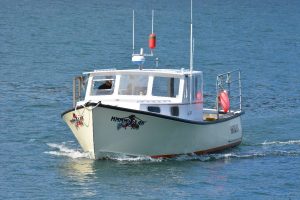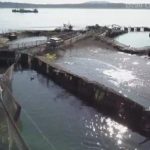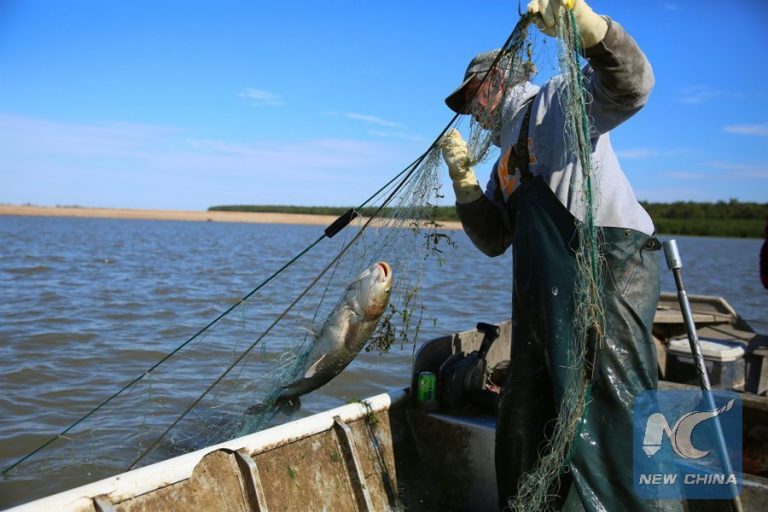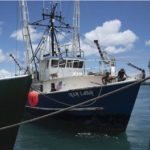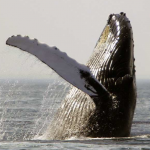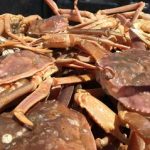Uninformed vs. Science: The story of swordfish in the Northwest Atlantic is complex and subject to many versions of revisionist histories.
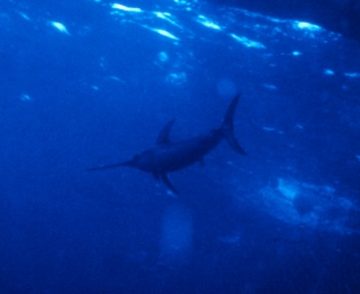
Every once in a while you read something that is so wrong, it sticks with you. A recent statement by the American Sportfish Association, (ASA), published in the Fishing Wire, met and exceeded the mark of just plain wrong. And to compound the affront, several marginalized groups threw in their support for good measure. I know better than to bark at the moon but here goes……………
Uninformed vs. Science
The story of swordfish in the Northwest Atlantic is complex and subject to many versions of revisionist histories.
Facts::
Swordfish are owned by all US citizens as a public resource. The US is allocated a historic 27% of the international quota of swordfish in the Northwest Atlantic. This allocation is a share of the Total Allow-able Catch (TAC) as determined by the International Commission for the Conservation of Atlantic Tuna (ICCAT). From the inception of ICAAT, the US has been considered a major harvester of swordfish. Our historic 27% has kept the US at the big table, exercising significant influence during international annual negotiations over highly migratory species (HMS), including swordfish. Over time we have used our strong share position to pry and cajole other ICCAT members to accept new realities on billfish, in-cluding marlin, minimum size regulations and improved reporting. During this tenure, many minor har-vesting nations, have continually petitioned ICCAT for a piece of the HMS pie or larger share.
Every month the NOAA Fisheries Service blasts an email containing the Atlantic Swordfish Landings update and upon arrival I continually grind my teeth at the numbers. For more years than can be count-ed the US pelagic long-line fleet has averaged harvests of a poor 30% of our adjusted quota of the North Atlantic Total Allowable Catch. To be clear, we are catching a scant 30% of our historically allocated 27%. Reasons for this poor showing are legion but include such causes as increased regulation including regulatory discards, closed areas, size restrictions and landing limitations; onerous vessel requirements including constant video observation and market conditions dictated by unrestricted foreign imports. This continued under performance denies the US public owners access to their swordfish resource and erodes our increasingly defenseless arguments against the reallocation of our swordfish quota to foreign nations with foreign fleets under limited or non-existent local regulation and restrictions.
The ASA statement correctly described the closure of the Florida Straits to pelagic long-lines in 2001 and went on to describe this as a “significant conservation victory”. The problem is that nothing could be further from the truth. The NMFS collects catch statistics from every commercial fishery operating in Federal waters in the US. It takes some time to analyze these numbers for each fishery but for swordfish the “hard” numbers are finalized in 24 months. The results for the 2001 swordfish harvest became avail-able in 2003 and revealed that swordfish in the NW Atlantic exceeded 100% spawning stock biomass. This meant that more than enough swordfish remained after harvest to replace the existing fish to healthy population numbers. We closed a significant piece of ground to fishing for one of the healthiest fish stocks in the US. This action and actions like this account for a piece of the loss of our harvesting abilities.
Fast forward 17 years to the same closed area off the Florida east coast. Pelagic long-lining is still pro-hibited, a recreational swordfish fleet has taken its place in everything but numbers and a scientific pro-posal is made to investigate the effects of the closure and allow a limited number of small long-line boats to fish the Straits. The over-riding intent of this scientific proposal and its required Exempted Fishing Permit (EFP) is to compare by-catch rates inside and outside the closed area. Aside from the infor-mation obtained on newer pelagic gear technologies, weak hooks to AIS buoys, the existence of a series of scientific studies within this and other commercial fisheries will not be lost on the international mem-bers of ICCAT. In addition to possibly refining this commercial gear further to the benefit of conserva-tion and gains against acquisition of our quota, a strong defense against redistribution of the uncaught US quota can be manufactured.
Scientific assessment of a management measure under fairly rigorous observation may beget contributions to strategic development of improved harvesting technologies to-ward improved quota performance, delay international reduction and redistribution efforts of the US NW Atlantic swordfish shares and ultimately preservation of our current 27% birth right. As proposed by the ASA and it marginally informed and involved supporters – opposition to this scientific study guarantees the status quo, declining US harvests and a successively weaker position internationally. It is important to remember and harder to forget that at the time of closure, this was one of the healthiest fisheries in the USA.
Consequences
Defeating an attempt to study certain aspects of management by area closure not only impacts this small commercial fleet but carries ramifications for all recreational anglers too – think Marine Protected Areas (MPAs). This fishery management tool is being used increasingly to limit or prohibit all fishing in an ex-panding number of US waters. Opposition to a study designed to compare catch rates and bycatch rates concurrently inside and out of the closed area would appear somewhat short sighted and ill informed. Is it possible that the experimental design being used here and the analytical techniques employed could benefit like and similar assays of MPA recreational closures? As with most things, the swordfish cuts both ways. We currently have a recreational fishing reservation off the Florida east coast but to preserve it we must oppose science and any attempt to measure its effectiveness for which it was originally pro-posed. Can we be so hypocritical as to demand future inspections and the application of science to his-torically favored recreational areas closed by management decree for the sake of stocks and the envi-ronment?
Unintended Consequences
Opposition to scientific study sounds like a bad position to even consider taking. Agree or disagree with the specifics of the study, this issue is a storm in need of a port. The consistently low catch number for the US fleet have us capturing less than 10% of the NW Atlantic Total Allowable Catch. At this level we are a minor harvester in everything but name. Each year at the international meeting where catch lev-els are determined the US continues to insist on rolling over a portion of our uncaught quota. After a
serious run of years, the unutilized US number has become the 900lb gorilla at the table. Other nations, most deserving a share, have territorial or historic claims that are increasingly hard to ignore. Predictions of redistribution are self fulfilling if we deny scientific inquiry into those measures that impact our ability to harvest our quota. You do not necessarily have to agree with the results or their interpretation but you can’t oppose the process. Lest I remind – our woeful performance is registering a scant 30% of our US swordfish quota.
Upon redistribution many of the gains we have made internationally with regard to marlin, small fish, and data collection become suspect. It can be expected that new shareholders will include countries in the Caribbean, Mexico and possibly others with reduced restriction, limited regulations and little or no conservation ethic concerning all highly migratory species. Commercial markets exist in many of these locales for some, or all, recreationally important billfish. To date, it has been the magnitude of our com-mercial harvests that has allowed us to introduce conservation measures to high-seas release regulations for marlins, imposition of size limits for other species and introduce some reporting and compliance re-quirements.
For me it is a question of serving the US public owners of these resources with both access to highly reg-ulated US caught and landed fish and preserving our hard fought and won highly migratory conserva-tion gains. Consideration of commercial access, recreational opportunity and continued conservation progress delivers the US public owners their birth right. Without continued scientific inquiry and in the absence of improving commercial harvests, we move rapidly toward the rocks. The predictable conse-quences of increased regulation, expanding MPAs and resulting landings reductions will impact our abil-ity to influence future international rule making, multi-national compromise and most importantly, inter-national compliance.
Conclusion
Though different in scale, fishing is fishing, both sport and commercial reduce a public property to pri-vate possession. Vocation or avocation, these industries share more in common than not. Local alloca-tion issues have proven difficult to resolve on occasion but unanimous support for science based man-agement has been a touchstone. Although this missive will be misinterpreted as a defense of US pelagic long-lining, it is rather a statement of simple recognition of the import of our commercial harvest num-bers as the basis for HMS management and reflect our present and future standing internationally
The proposed area of study was closed in 2001 when the fishery at issue was one of the healthiest in the US. Now in 2018, we have several lobbying groups opposing a scientific study of the area that not only will attempt to quantify the merits of MPAs as a management tool but critically does so at a time when our national quota is at grave risk. Studies of this kind offer incremental glimmers of hope to finding better ways around and through the imprecise pursuit of fish. These are some of my thoughts with re-gard to the consequences of a diminishing US pelagic long-line fleet and statements of opposition con-cerning any application of science. At some point, I believe it is in everyone’s interest, those that reduce fish to private possession, to prepare for a future of diminished international highly migratory species influence, US quota defense in the absence of US harvests and collateral highly migratory species loss. Pillorying the commercial guys and the scientists that propose to study their activity is ill-conceived and as I’ve stated, generally not well thought out. The ASA statement remarked that “our organizations see no legitimate need for the proposal” – guess I’m not alone barking at the moon.
Edward Gaw
HI-LINER Fishing Gear, Inc.
HI-LINER
FISHING GEAR AND TACKLE, INC.
3529 ENTERPRISE WAY, GREEN COVE SPRINGS, FL 32043
PH (800) 525-4327 FAX (904) 531-5099 www.hiliner.com
www.diamondfishing.com

































